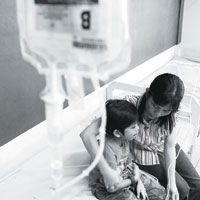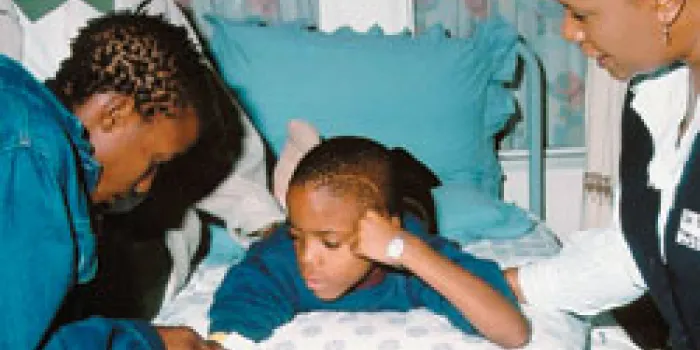A child and his mother travel for a week by bus in Peru to visit a treatment center. A young man from rural Armenia has a leg amputated—the result of a lack of available factor concentrates.
Countless stories such as these demonstrate the wide disparity around the world in access to treatment and the level of care for people with bleeding disorders.
For 47 years, the World Federation of Hemophilia (WFH) has been committed to improving care for people with bleeding disorders worldwide. Our mission is to achieve “Treatment for All” across the globe.
The journey began in June 1963 when WFH Founder Frank Schnabel convened a global meeting of patients and doctors to establish an international hemophilia organization. The National Hemophilia Foundation was one of the founding members. Since then, WFH has grown, becoming a global organization representing 113 nations.
Improving Access to Care
WFH development programs offer support in up to 97 countries annually, helping provide care for tens of thousands of people. Thanks to improvements in care and advances in therapies, people with bleeding disorders in developed countries are living longer, fuller lives than ever before. However, in the developing world, only about 25% of people with bleeding disorders receive adequate treatment. The rest die young or are at great risk of permanent disability.

A Global Partnership
In 2003, WFH established the Global Alliance for Progress (GAP) program to introduce or improve care for people with bleeding disorders in up to 30 targeted developing countries over 10 years. Since then, GAP projects have been launched in 16 countries with 43,971 new patients.
Through GAP, countries work toward long-term improvement in care. For example, when Russia joined the GAP program in 2004, treatment products were mainly available only in St. Petersburg and Moscow. Over the years, the Russian Hemophilia Society, with the support of the WFH, successfully lobbied the government to purchase more factor concentrates. Today, treatment is available in every region in Russia, and a large number of children are on prophylaxis. In 2009, the Russian government purchased 588 million international units (IUs) of clotting factor concentrates.
The availability of safe treatment products is lacking in many developing countries. The WFH channels donations of products through our Humanitarian Aid Program. Donations help hemophilia organizations and treatment centers develop ongoing care programs. Donated products are also used for emergent, life-threatening cases in countries with limited treatment. Since 2003, more than 90 million IUs of factor have been channeled through the WFH to 68 countries around the world. (See “The International Factor,” HemAware January/February 2009.)
As a global community, we can all work together to achieve “Treatment for All.” Available care is fundamental to improving our health and our lives. Our challenge is to ensure that all people with bleeding disorders, no matter where they live, receive proper treatment and care.

